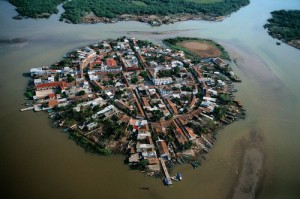 San Blas is a port and city in the state of Nayarit, with a great history, thanks to its ancient colonial monuments and contemporary architecture. It was founded in the seventeenth century and soon became the most important port in the Pacific. It is currently considered one of the destinations that still retain its virgin ecological environment, a natural habitat rich in flora and fauna. more…
San Blas is a port and city in the state of Nayarit, with a great history, thanks to its ancient colonial monuments and contemporary architecture. It was founded in the seventeenth century and soon became the most important port in the Pacific. It is currently considered one of the destinations that still retain its virgin ecological environment, a natural habitat rich in flora and fauna. more…
Archive for May, 2009
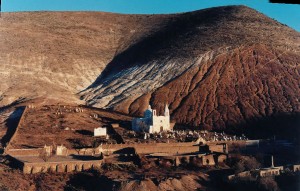 The village is located in the state of San Luis Potosi in northern Mexico, is a semi-abandoned town in the desert. It is a colonial mining town that currently is almost uninhabited because the production in the mines stopped, the veins were almost empty and people began to leave the town searching for work.
The village is located in the state of San Luis Potosi in northern Mexico, is a semi-abandoned town in the desert. It is a colonial mining town that currently is almost uninhabited because the production in the mines stopped, the veins were almost empty and people began to leave the town searching for work.
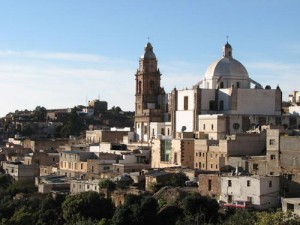 In 1733 it was discovered the first silver vein, but later, in 1744, the village was burned by indigenous groups who were trying to defend themselves from the war of extermination conducted by the Spanish. The town was rebuilt in 1767, thanks to the discovery of new veins of silver in the place, which led to a crowd of miners and adventurers came to the place in search of luck, unleashing a veritable fever of silver in totally unfavorable conditions: no roads, there was no water and supplies were difficult. All this helped later to improve transport links between the capital and Catorce, and the construction of its most representative buildings. more…
In 1733 it was discovered the first silver vein, but later, in 1744, the village was burned by indigenous groups who were trying to defend themselves from the war of extermination conducted by the Spanish. The town was rebuilt in 1767, thanks to the discovery of new veins of silver in the place, which led to a crowd of miners and adventurers came to the place in search of luck, unleashing a veritable fever of silver in totally unfavorable conditions: no roads, there was no water and supplies were difficult. All this helped later to improve transport links between the capital and Catorce, and the construction of its most representative buildings. more…
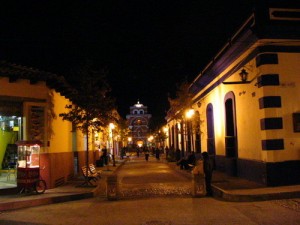 San Cristobal de las Casas is located in the center of the State of Chiapas, is the main tourist destination in Chiapas. It was one of the first towns built in the Spanish Northern America and it was named Pueblo Mágico, but actually has the quality of city. It has been considered the cultural capital and pride of the State of Chiapas, where there are different cultural expressions both from Chiapas and worldwide.
San Cristobal de las Casas is located in the center of the State of Chiapas, is the main tourist destination in Chiapas. It was one of the first towns built in the Spanish Northern America and it was named Pueblo Mágico, but actually has the quality of city. It has been considered the cultural capital and pride of the State of Chiapas, where there are different cultural expressions both from Chiapas and worldwide.
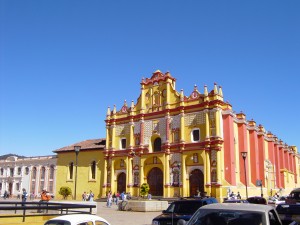 In this city people can discover magnificent religious buildings like the Cathedral, built in the seventeenth century or the Temple of Santo Domingo, which dates from 1547, the two buildings are lined with colorful details of Baroque and indigenous manufacturing, which perpetuate the cultural heritage of ethnic Tzotzil, Tzeltal and Lacandones, from whom we can also observe exotic collections of objects of daily use, handicrafts and sheltered prehispanic pieces in the Museum Na Bolom or the Cultural Center of Los Altos de Chiapas. Today many of these indigenous tribes still live in the neighborhood. more…
In this city people can discover magnificent religious buildings like the Cathedral, built in the seventeenth century or the Temple of Santo Domingo, which dates from 1547, the two buildings are lined with colorful details of Baroque and indigenous manufacturing, which perpetuate the cultural heritage of ethnic Tzotzil, Tzeltal and Lacandones, from whom we can also observe exotic collections of objects of daily use, handicrafts and sheltered prehispanic pieces in the Museum Na Bolom or the Cultural Center of Los Altos de Chiapas. Today many of these indigenous tribes still live in the neighborhood. more…
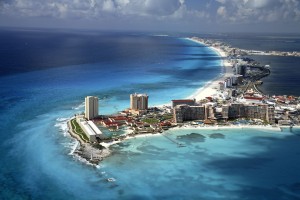 Cancun is the most important gateway to the Mayan world, where you people find beautiful and legendary archaeological cities and scenic and beautiful beaches. Cancun comes from the Mayan Kaan Kun, which means “nest of snakes”. Is located in the northeast of the Yucatan Peninsula and from its coast is possible to clearly see the Isla Mujeres.
Cancun is the most important gateway to the Mayan world, where you people find beautiful and legendary archaeological cities and scenic and beautiful beaches. Cancun comes from the Mayan Kaan Kun, which means “nest of snakes”. Is located in the northeast of the Yucatan Peninsula and from its coast is possible to clearly see the Isla Mujeres.
During the classical period and the post-classic Mesoamerican period, the Mayans had a business network from the Laguna de Términos to Honduras, for this activity they established shipping routes for travel touring the entire coast of the now state of Quintana Roo, for this, they made constructions by the sea for trade, as well as to monitor and assist navigation. Today people can find the vestiges of their greatness as the extraordinary strength of Tulum, Coba and City Kohunlich, among others. There are remains of many famous sites, but most of them unexplored. According to studies, the sites of “El Meco, Yamil Lu’um” and “The King” were points inhabited until the sixteenth century. more…
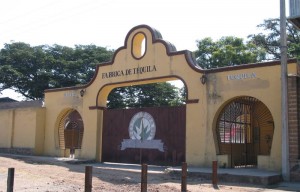 Tequila is a municipality and a town in the state of Jalisco. The name Tequila comes from the Nahuatl word Tecuilan or tequillan, which means “Place of taxes”. Since 2003 it’s is a “Pueblo Mágico” and is famous worldwide for giving its name to Tequila, being the place where it is produced.
Tequila is a municipality and a town in the state of Jalisco. The name Tequila comes from the Nahuatl word Tecuilan or tequillan, which means “Place of taxes”. Since 2003 it’s is a “Pueblo Mágico” and is famous worldwide for giving its name to Tequila, being the place where it is produced.
The town of Santiago de Tequila was founded in 1530 by Franciscan monks on the orders of Fray Juan Calera. In 1600 was established the first distillery of agave, which was previously consumed but not distilled, creating like this the first tequila factory itself. After independence, in 1824 Tequila was named one of the 26 departments that originally divided the state of Jalisco, also giving it the title of town. more…
